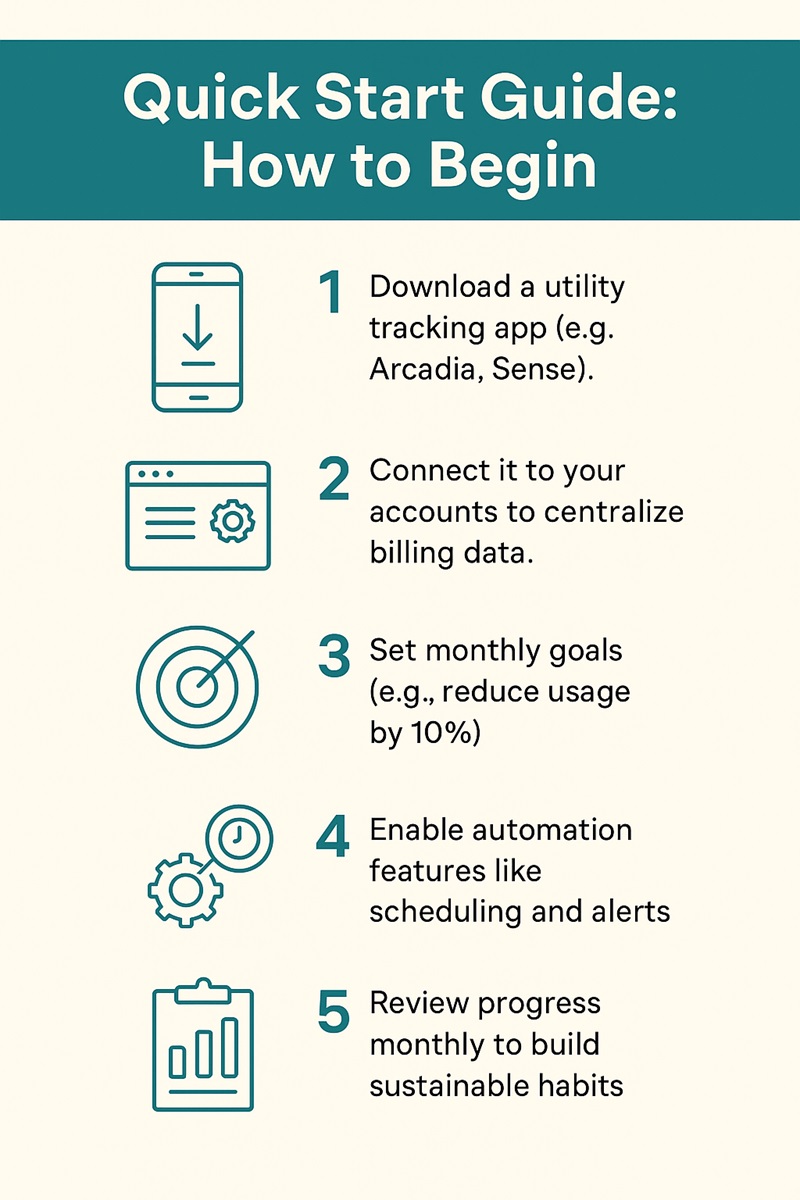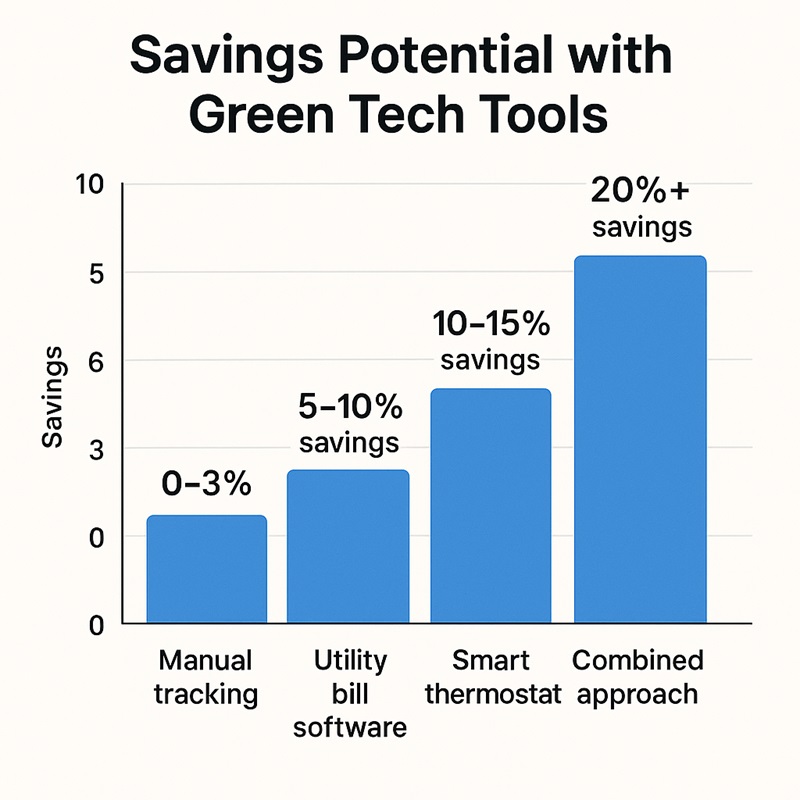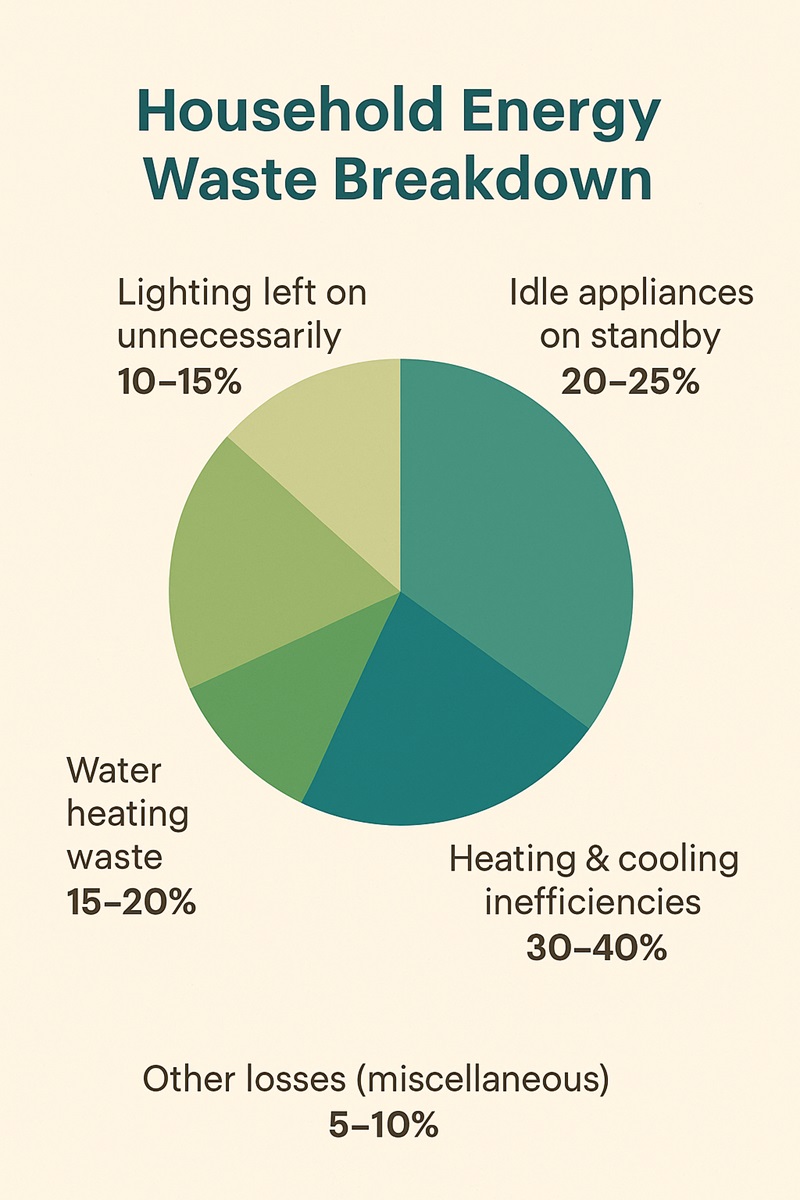Today, saving money and living green go hand in hand. Technology now makes it easier for people to make smart choices every day. From cutting energy bills to lowering waste, green tech tools help balance convenience, savings, and eco-friendly living.
One of the best examples is utility bill management software. These tools let homeowners, renters, and businesses track their energy use, find waste, and make quick changes that save both money and the planet.
But this is only the start. From smart appliances to AI-powered insights, everyday software is changing how we live. Step by step, these tools make it easier to build habits that protect the Earth while also protecting our wallets.
Why Energy & Cost Management Matters
- The average U.S. home spends about $2,200 a year on utilities (DOE).
- Studies show 20–30% of that energy is wasted through idle devices, poor insulation, or bad habits.
- Globally, homes use about 21% of all energy, meaning small daily changes can make a big difference.
That’s where software helps—making energy use easy to see, track, and improve.
Making Energy Management Simple
Utility bills are hard to read. Rates change, hidden fees show up, and seasonal spikes make costs unpredictable.
Utility bill management software fixes this. It gathers data into one easy platform.
With smart dashboards, you can:
- Track real-time use of electricity, water, and gas.
- See patterns in charts and graphs.
- Spot waste—like running appliances at peak hours.
- Set alerts to avoid high bills.
Example: Sense, a popular energy app, can show when your fridge, TV, or washer is running—and how much each costs per hour.
By making energy clear, these tools help homes and businesses save money and cut waste at the same time.
The Role of Automation in Everyday Sustainability
Modern platforms do more than collect data; they automate eco-friendly decisions.
What Automation Can Do:
- Alerts: Notifications about unusual spikes in water or power use.
- Smart Scheduling: Automatically power down devices when not in use.
- AI Recommendations: Suggest eco-friendly alternatives (e.g., lowering thermostat at night).
- Goal Tracking: Gamify sustainability with monthly savings or usage targets.
Instead of guessing where waste occurs, automation ensures households and businesses act efficiently every day.
Examples of Green Tech Apps
Here are some standout apps and platforms that make green living easier:
| App/Software | Best For | Key Features | Cost |
| Sense | Home energy monitoring | Real-time device detection, energy reports | ~$299 (one-time device) |
| Arcadia | Clean energy sourcing | Matches your usage with renewable energy credits | Free–$10/month |
| Mint / YNAB | Budgeting & bills | Track utility expenses with financial dashboards | Free–$14.99/month |
| JouleBug | Gamified sustainability | Challenges for eco-friendly living (carpool, recycling) | Free |
| EnergyHub | Business/commercial | Grid management, HVAC efficiency | Custom pricing |
Adding brand names increases SEO discoverability while offering readers immediate next steps.
Empowering Users Through Insights
Many people don’t realize how small changes—like turning off unused lights—can add up. Green tech helps highlight these hidden costs.
Example:
- Turning down a thermostat by just 1 degree can reduce heating bills by 1–3%.
- Smart thermostats like Google Nest claim to save households 10–15% annually on heating and cooling.
By presenting this data visually, software fosters awareness and responsibility, transforming eco-friendly behaviors from abstract ideals into measurable actions.
Green Tech in Everyday Life
Adopting green tech doesn’t require expensive renovations. Simple tools and smart systems fit seamlessly into daily life.
- Smart Appliances
Refrigerators, washers, and ovens that optimize cycles based on need, reducing unnecessary consumption.
- Energy Dashboards
Consolidated platforms that display all utility use in one place for easy tracking.
- Automated Scheduling
Plug-in timers or apps that run devices only when needed.
- Business Applications
Companies can cut overheads and meet ESG (Environmental, Social, Governance) goals by monitoring energy usage across facilities.
Broader Impact on Communities and the Planet
When individuals adopt energy management tools, the collective impact is massive:
- Reduced strain on national power grids.
- Lowered carbon emissions.
- Bill savings that can be reinvested into sustainable infrastructure.
If just 10% of U.S. households used smart energy management, the savings could equal removing millions of cars from the road annually.
Looking Ahead: The Future of Green Tech
The next decade will see green tech integrated into every corner of daily life.
- AI & Machine Learning: Personalized recommendations based on your lifestyle.
- Blockchain Energy Tracking: Secure, transparent monitoring of carbon credits.
- IoT Smart Grids: Neighborhoods pooling resources for efficiency.
- EV Integration: Cars syncing with home energy systems to store and release power.
- Government Incentives: Rebates and tax credits for adopting green tech.
This means that eco-friendly living will soon be the default—not the exception.

Quick Start Guide: How to Begin
- Download a utility tracking app (e.g., Arcadia, Sense).
- Connect it to your accounts to centralize billing data.
- Set monthly goals (e.g., reduce usage by 10%).
- Enable automation features like scheduling and alerts.
- Review progress monthly to build sustainable habits.
FAQs About Green Tech for Everyday Life
Q1: How much money can I save with utility bill software?
Most homes save 5–20% each year. That’s about $200–$400 for the average household.
Q2: Is green tech expensive?
Not always. Many apps are free or low-cost. Smart thermostats ($100–$250) usually pay for themselves in 1–2 years.
Q3: Can businesses use these tools?
Yes. They save money on energy and improve their eco-friendly image. This is important for investors and green-minded customers.
Q4: What’s the difference between green tech software and smart appliances?
Software tracks and gives advice. Smart appliances act on it by cutting waste. Together, they save the most.
Q5: Does green tech really help the environment?
Yes. Lower energy use means fewer greenhouse gases and less stress on the power grid.
Conclusion
Green tech is no longer a dream. It’s here, easy to use, and powerful. By tracking and cutting energy use, homes and businesses save money and protect the planet.
Smart dashboards, auto-scheduling, and fun apps make it simple. With wider use, these tools create big change for communities, economies, and the environment.
Saving money and saving the planet now go hand in hand—thanks to green tech.






